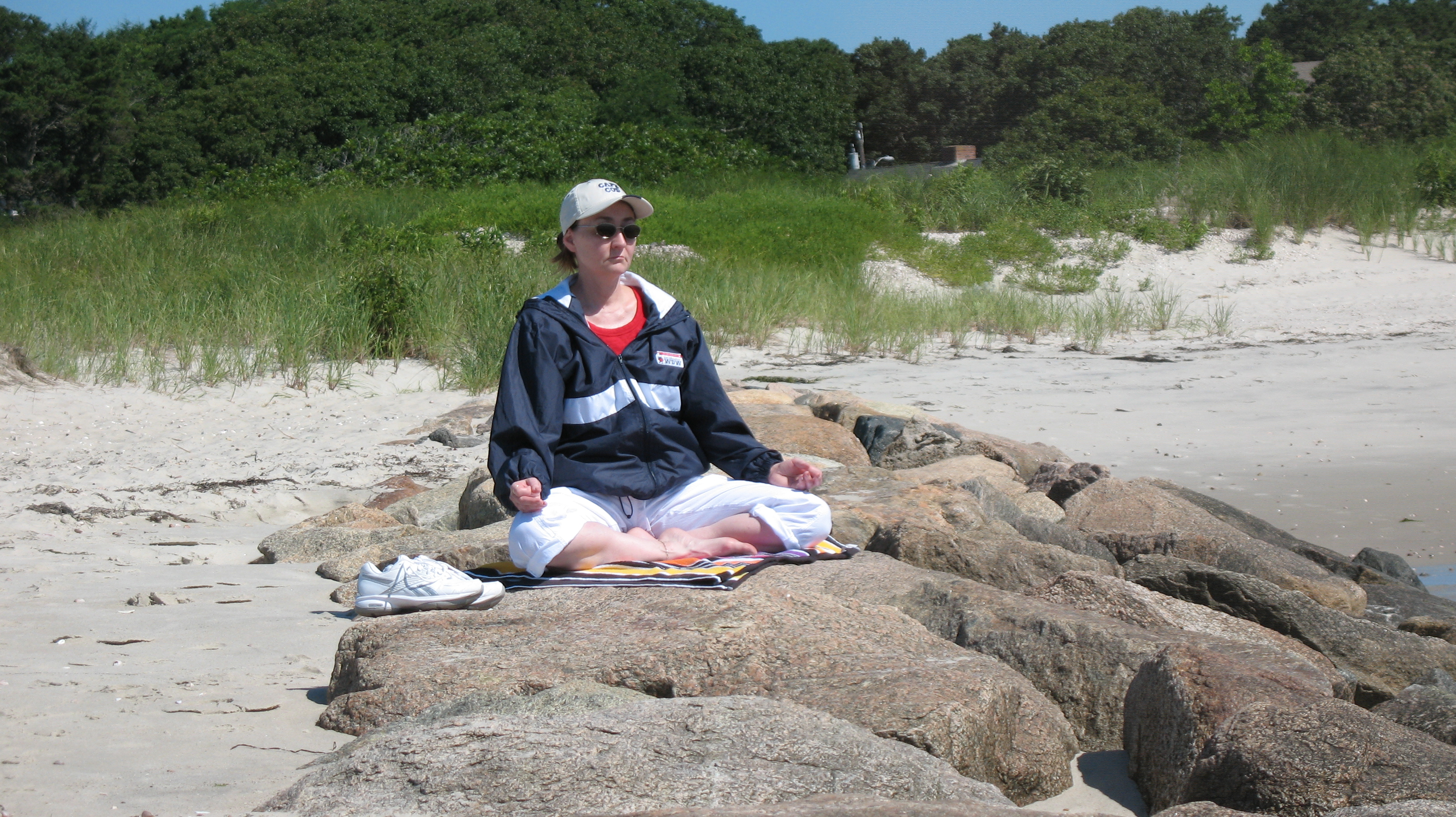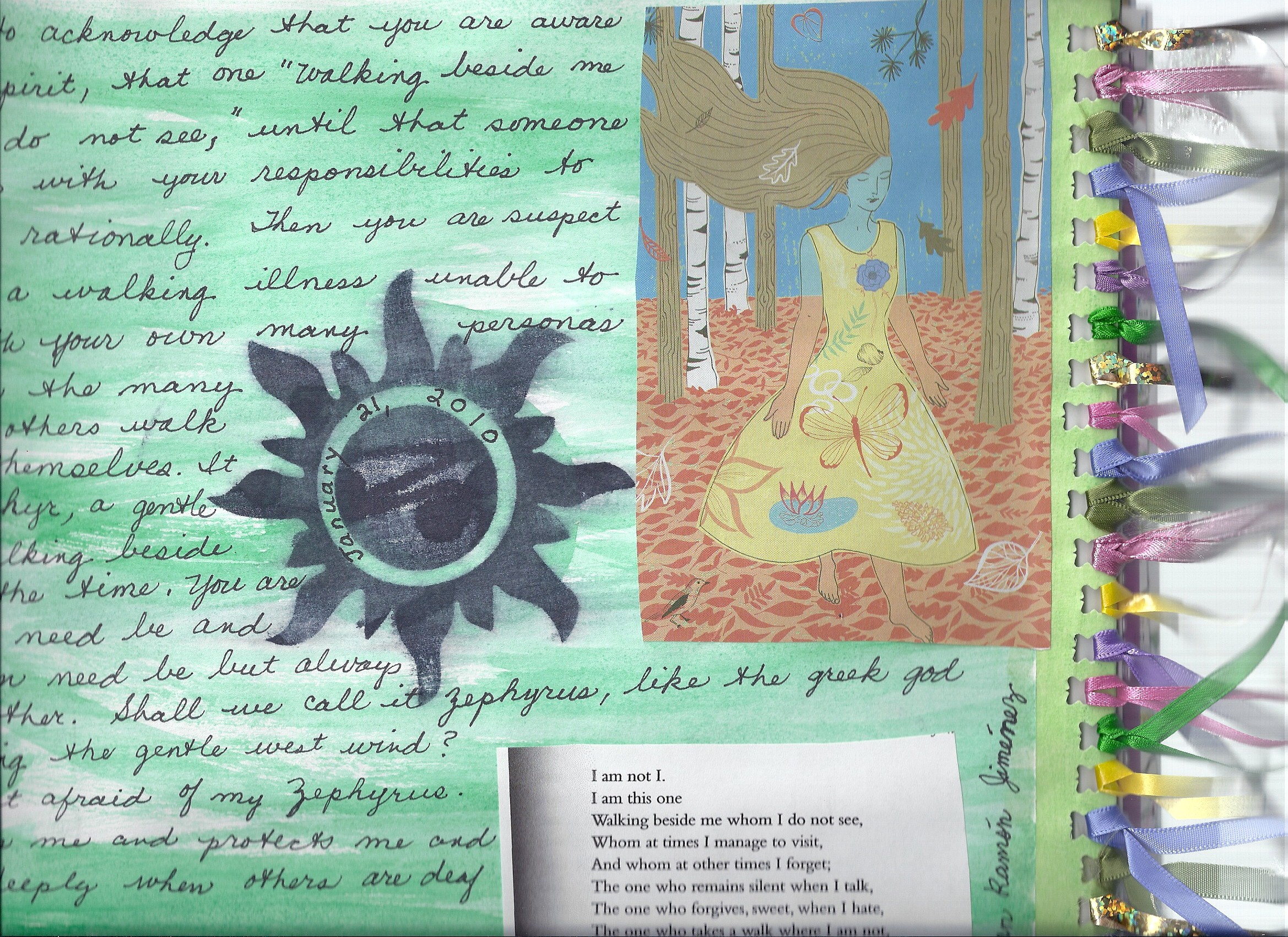How Do You Know If You’re Meditating?

There are five primary areas of practice to the Writer Wellness plan. Relaxation/meditation, creative play, fitness and exercise, journaling, and nutrition.
“Success is never a destination—it’s a journey.” ~Satenig St. Marie,
Unless we have a homemade brain wave monitoring machine, we usually don’t have the means to measure our level of success with meditation in a scientific sense. We can feel certain changes and measure them to a degree. The average meditation journey should experience three specific measurable stages:
1.Tension-this is where we notice just how tight our jaw bones are, how sore our backs are and how busy our minds tend to be.
2.Letting go-this is when we notice some of the tension releasing and our breathing is slowing down.
3.THERE-this is when we become aware of very few things, less and less bothers us physically and mentally we realize our thoughts have slowed down, and we can control whether or not we want to follow monkey mind down its ragged path. We do not follow monkey mind.
These stages coincide with known and studied brain wave activity.
1.Tension = Beta (busy, busy, busy mind)
2.Letting go = Alpha (focused awareness on our breath and what it’s doing, fewer thoughts)
3.THERE = Theta (just about to cross the hazy boundary into slumber-ville)
Sleep isn’t meditation, and theta is the gatekeeper of sleep, so the goal is to remain relaxed and aware at the alpha level. Regardless of how messy the day has been, a successful meditation session need only give us a conscious pause from the issues we’re dealing with and that’s enough. Yep. It only takes a few minutes a day to meditate successfully. But what does a successful meditation practice “feel” like?

This brings up the question of goals. Should we have goals where meditation is concerned? Is it better to let things take their course and follow along?
Like yoga, meditation is a blend of healthy balance. It’s right to set a goal to meditate for a specific amount of time each day. It’s right to practice particular habits like sitting still and watching breath flow. But it isn’t right to set expectations beyond the realm of the realistic. Why? Because unlike measuring the fact that our brain activity actually slows down during meditation, it creates more stress to attach a measurement or a benchmark for meditation. “If I don’t find perfect peace in my life in three months of meditating, I failed and will give up meditating.” Or “I should notice a major shift in my actions in a set period of time, and if I don’t I will stop meditating because it just isn’t for me.” These are normal examples of our “quick fix”, I-want-it-now mindsets, and this doesn’t work with meditation.
With meditation, the less you expect, the more you receive.

To answer the question of what successful meditation feels like, beyond the physical and mental releases (which may not feel gigantic, but they occur,) the positive results of regular meditation show themselves in our everyday actions.
1.We are more patient.
2.We smile more.
3.We laugh bigger.
4.We appreciate little things more.
5.We share more.
6.We hold the door more often.
7.We focus better.
8.We are healthier.
9.We are brave.
10.We trust more.
11.We think the best first.
12.We are less critical of ourselves and others.
13.We are more accepting.
14.We are more loving.
15.We are more truthful.
16.We are more understanding.
17.We are more creative.
18.We are more of who we were meant to be.
19.We are better drivers.
20.We are better listeners.
It’s a long journey worth every step. Do you have any meditation stories to share from your journey?
Be well, write well.
~hugs,
Joy

Joy E. Held is the author of Writer Wellness, A Writer’s Path to Health and Creativity, a college educator, blogger, and yoga/meditation teacher. Her work has appeared in numerous publications including Romance Writers Report, Dance Teacher Now, Yoga Journal, and Woman Engineer Magazine.

Photo: K. Held, 2011
Copyright 2018, Joy E. Held






 most important freedoms: speech.
most important freedoms: speech.